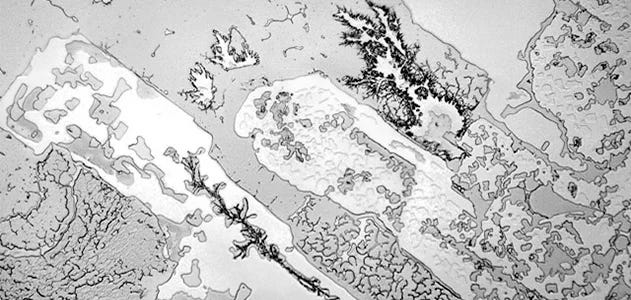Feelings: the macronutrients for the soul
Well, as we sling the last week of January on our backs and head into the faint hope of February's heart flutter I'm adding to the joy by introducing the feeling of the week which is... sadness
But what if sadness is not all that bad?
What if we considered emotions to be the macronutrients of the soul?
American psychiatrist EJ Khantzian argued that an addict will use a substance or behaviour to medicate their distress, something known as the self medication hypothesis.
He suggested that certain drugs help soothe specific feelings: heroin, for example helps to alleviate anger and trauma (Khantzian, 1999), alcohol may be turned to by people unwittingly trying to medicate depression.
Basically, anything that can make you feel different can be used to make you not feel what you are feeling, and that can lead to addiction.
Maybe that seems obvious nowadays, but when we see people’s behaviour as ‘disorders’ that they have, or even a ‘disordered’ personality, it totally bypasses this idea that feelings are involved. It even gives an subtle message that we are disordered to feel.
So much meaning is attached to feelings, which is influenced by the culture that we live in. How many times do you see people apologise for crying? Yet each emotion serves a purpose.
Think of emotions like macronutrients.
Love and fear are like proteins - the building blocks to connection and boundaries.
Anger is like a carbohydrate - a great emotion to give the energy for change.
Sadness - an opportunity to connect with our inner pharmacy.
No emotions are bad or good, they just are, and they all have their use.
That’s why we have them, because Mother Nature is highly efficient and equips us with what we need.
When we are sad we cry and tears of grief are chemically different to other tears. When we cry tears of grief a hormone called leucine enkephalin is triggered. This is a hormone that is a natural painkiller… so if you don’t cry then you can’t access the internal first aid box that you carry around with you and can dip into when you need it.
No, instead of crying we bottle them up…and then 'hit the bottle'.
Unfortunately, much like the orthorexic approach to food, there seems to be a similar approach to feelings.
Orthorexia is the exclusion of foods in the pursuit of the ‘ideal’ diet, but it has serious consequences for our mental and physical health.
So does emotional orthorexia (yes, I just made that up… emorexia anyone?!)
We need a balanced diet of all the emotions because that is how we operate. If we do not process anger or fear in a healthy way, then depression and anxiety may well come knocking at our door, or stomach ulcers, migraines or fibromyalgia.
I’ve heard enough.
The record stuck.
The song a chalkboard screech.
I cannot speak.
There are no words.
Defences have been vented,
Accusations hurled.
I cannot write.
No ink splurge can do justice.
But…
I can feel.
It’s all I have.
And so the body heaves
And so the tears fall.
Emotions play a FUNDAMENTAL part to our wellbeing. This is because emotions are good signposts that we need to regulate ourselves in some way to get back to an equilibrium. They help us change behaviour - like saying no, asking for a hug, or just having a good old ugly face cry because it feels better.
I’ve heard many times people say ‘Oh, if I start crying, I’ll never stop.’
Well, yes, you will actually.
Give it a go.
This does hint at an underlying fear about losing control I think. I believe that because feelings have been so erased from our society we rarely see examples of someone having a feeling and then processing it.
According to Dr. Jill Bolte Taylor, the Harvard neural anatomist, it takes 90 seconds to identify an emotion, feel it happen, process it and complete the process. Each feeling is like a wave that gathers momentum, peaks, crashes, recedes.
You can surf your emotions: notice it, name it, accept it, investigate it and then allow and release it.
So much of our suffering comes from the friction of not accepting or allowing our emotion.
It is what it is, neither good nor bad... just energy in motion: e-motion.
Scientists in Finland and Taiwan created an feelings atlas of the human body. They asked 773 participants to indicate how certain emotional charged materials made them feel, such as words, films, art.
The responses suggest that regardless of culture, gender, orientation, we feel our feelings in the same way.
Of course we do, because feelings are a physiological response to external stimuli. It is the meaning we make of them that means we want to deny or hide them.
Feeling our feelings is therefore a really natural process. When a feeling arises, rather than getting into our heads about what it means, how long it will last we can approach it with curiosity.
Where do you feel it, like where do you feel it physically?
What colour would you give it?
What shape and texture?
Does it have heat or is it stone cold?
I have the flame of shame that rides up my back, my heart’s heart beating in love, an aria of joy in my chest and a cold cloak of loneliness.
What about you? Let me know!
One final thing.
Have a look at this image, it’s so cool!
This image is a close up of a dried human tear shot by Rose-Lynn Fisher for her project The Typography of Tears - how cool is that?! As she said, everything we see in life is just the tip of the iceberg. Isn't it just?
Learning about our emotions and how to use them as signposts is one of the elements we explore in my Feeling Freedom online community.
That's it for now!
'Til next time.
Jacky x






